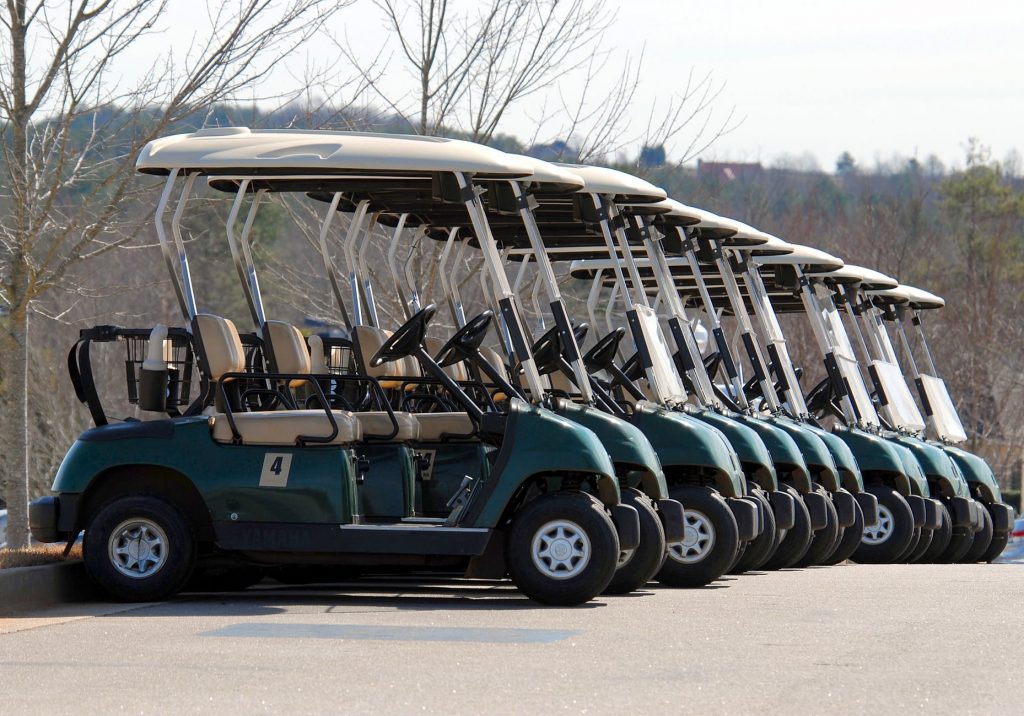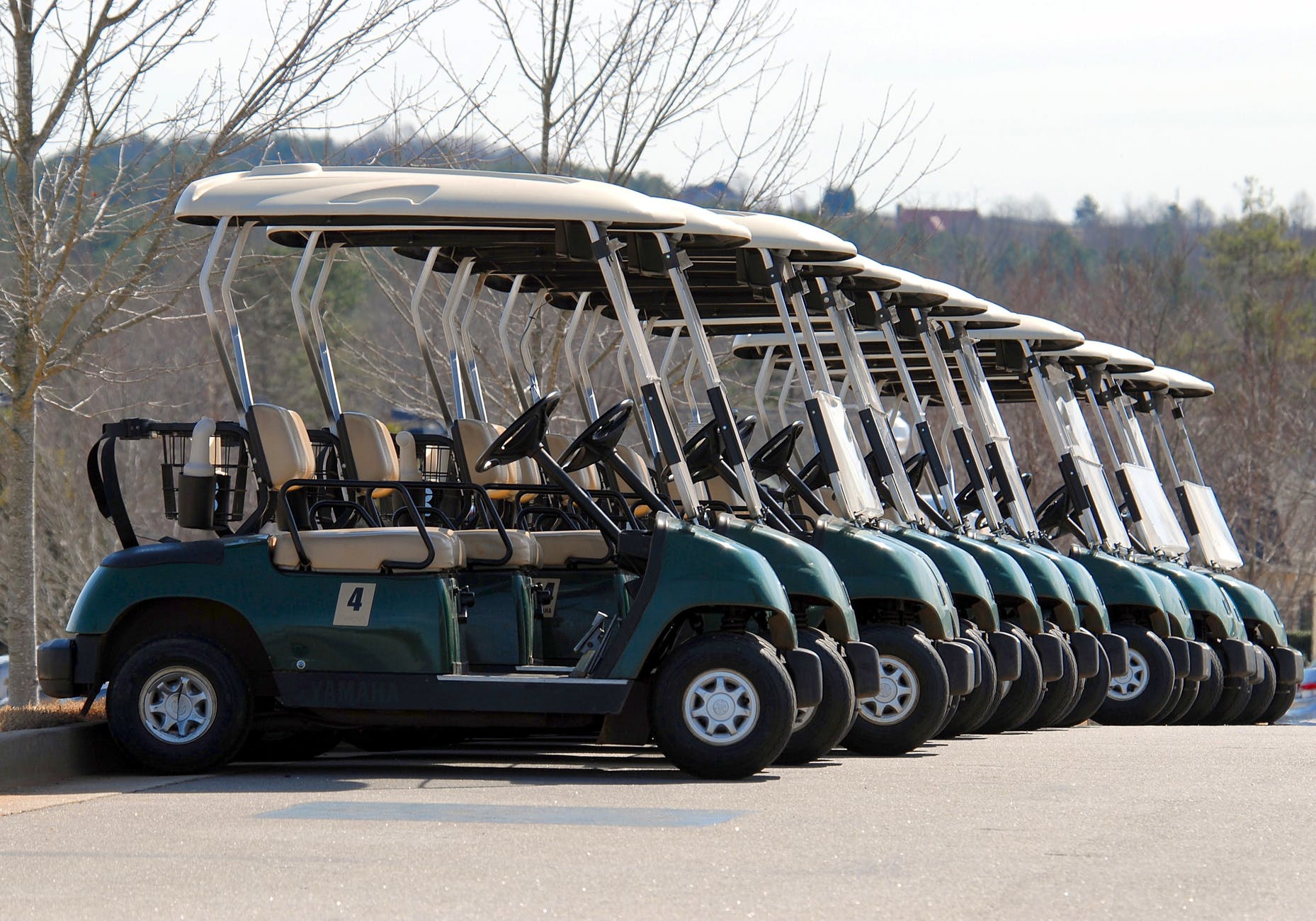
Golf carts are as common a sight as caddies in golf courses. In fact, a golf course that doesn’t have them might just feel a little bit incomplete, lacking in facilities, and implying that the place is not large or good enough to need them.
If it’s your first time in a golf course and you do see some carts, congratulations! However, before you hop into one, let’s learn more about these nifty vehicles. Let’s take a look at their parts, history, and operational basics.
When was the first golf cart used?
Golf carts came into widespread use in golf courses in the early part of the 1950s. The cart itself, however, was first made in the 1930s. The first ones were homemade and were popularly used by people with disabilities. The inspiration behind the first units were the three-wheeled electric carts used by senior citizens to go to the grocery store.
In the 1950s, when more and more golfers accepted the use of carts, many of the units produced were electric. In 1957, the first gasoline-powered golf cart was created. Today, many of these early golf carts are considered treasures; they are restored faithfully and kept as prized possessions by golfers and the average collector.
What are the parts of a golf cart?
Golf carts today don’t have one standard design, but they do come with very similar components. Their skeletons are made of rods, tubing, and steel plates reinforced with sheet aluminum, sheet steel, or fiberglass. They have rubber tires, metal steering wheels, motors, brakes, suspensions, electrical cables, transaxles, and batteries. They also have canopy tops, foam and vinyl seat cushions, storage baskets, and windshields.
Now that you’ve learned some basic information about golf carts, let’s proceed to learning the fundamentals of driving one. Golf carts are considered neighborhood electric vehicles. Their top speed falls between 15 to 35 mph. As such, keep the following in mind before and when driving a golf cart:
- Not everyone can drive a golf cart when it is used on private roads. Drivers must be fourteen years or older to be able to drive one.
- You don’t need a license to operate a golf cart. However, some states will require a permit for you to be able drive one. In some counties, anyone without a license will be able to operate the cart on private roads but not on main roads. The rules differ by state, so it’s best to do your research first.
- You can use a golf cart on a public road, but you will need a license to do so. Golf carts, however, are not allowed on roads with posted speeds of 35 mph or faster.
How do you drive a golf cart?
- Safety First
The first step to driving a golf cart is to keep safety in mind. Make sure you and your passengers are seated properly. Use the seat belts if they are included in your golf cart model.
- Start the Golf Cart
Take the key and insert it in the ignition. Turn it to the right to start the golf cart. Most golf carts are electric so when you turn the key, you switch its battery on. If the cart doesn’t start, it is possible that its battery needs looking into. To avoid interruptions to a good day out on the course, it is always best to have the best golf cart batteries installed.
- Move Forward
Keep the key setting to Forward in order to drive the golf cart forward. The Reverse setting is for driving backward. There are two pedals—press your foot down on the thin one; this pedal is for acceleration. Just like driving automobiles, make sure you press gently at first. Increase the pressure gradually; do not floor the pedal right after starting the battery to avoid accidents.
- Brake to Stop
Once you reach your destination on the course, press the brake pedal of the golf cart. This pedal is much wider than the one for acceleration and is on the left side. Again, much like the acceleration pedal, do not slam the brakes if you want the cart to stop. Press on it with gentle pressure until the vehicle is at full stop.
- Driving Reverse
To drive backwards, switch the key settings to Reverse. Make sure you have an unobstructed view of where want to drive backward to. Then press the accelerator gradually to move the golf cart.

The basics of driving a golf cart are not very hard to learn. In fact, if you know how to operate a standard vehicle, you will find driving a golf cart a walk in the park. Of course, just like driving a vehicle, you also need to keep the following safety guidelines in mind:
- Do not overload the cart. Carry the number of passengers according to the seats provided.
- Be aware of other golf carts and individuals on the course. Use the horn if you need to warn some people of your approach.
- Do not drive under the influence of drugs, narcotics, or alcohol.
- When turning, use hand signals. Make a turn by slowing down first. Turning at full speed may result in passengers and clubs flying off the vehicle. Also, make sure to check blind spots when driving a turn.
- When driving at night, make sure the cart has headlights, brake lights, and other reflective safety devices.
- When driving, keep your feet, legs, and arms inside the vehicle. The same rule applies to your passengers.
- Be extremely aware of the terrain and the weather in which you are driving. When driving in poor weather conditions, operate slowly. On surfaces that are not even or are unfamiliar, reduce your speed accordingly. Additionally, avoid driving fast on steep areas.
With these fundamentals in mind, you will no doubt become an expert at driving golf carts in no time. Simply keep safety in mind at all times and your time driving golf carts (and playing golf!) will surely always be efficient and enjoyable.
